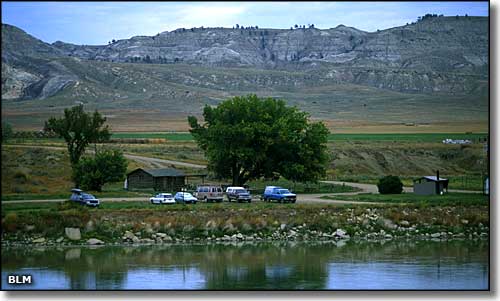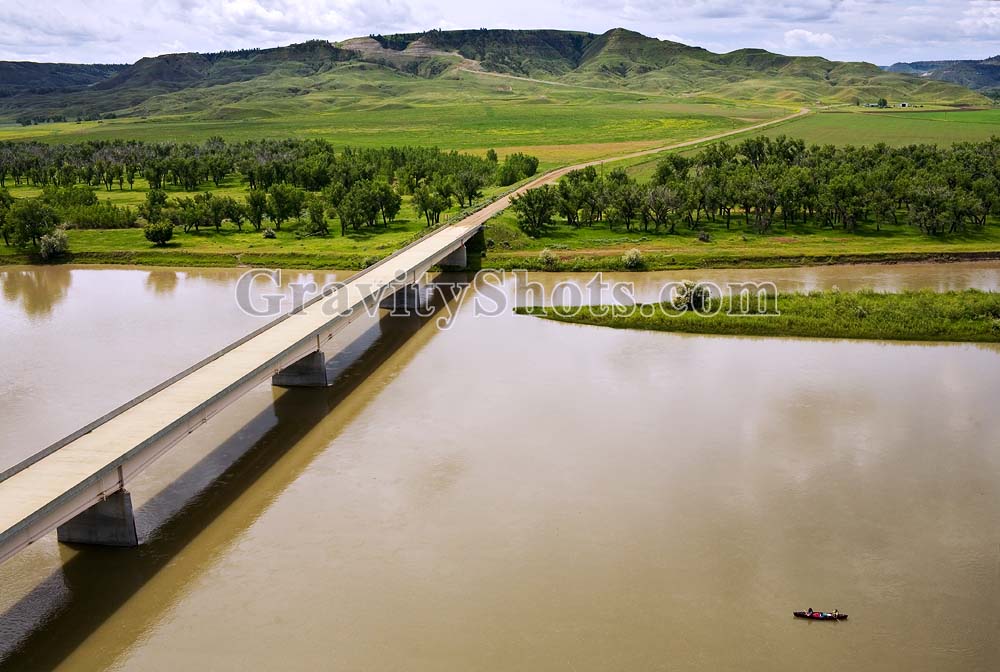
Where Time Stands Still: The Enduring Wilderness of Judith Landing, Montana
The gravel road dwindles, eventually giving way to a dusty track that snakes through the sun-baked prairie. Cell service vanishes, the horizon stretches endlessly, and the only sounds are the whisper of wind through sagebrush and the distant call of a hawk. This is the pilgrimage to Judith Landing, Montana – not a bustling town or a polished tourist destination, but a rugged, remote outpost on the Upper Missouri River. It is a place where time, seemingly, has ceased its hurried march, where the ghosts of explorers, fur traders, and Native American tribes still roam, and where the raw, untamed beauty of the American West remains vibrantly alive.
More than just a dot on a map, Judith Landing is a crucible of history, geology, and ecology, a portal to an era when the continent was still being charted and understood. It serves as a primary access point for the Upper Missouri River Breaks National Monument, a vast expanse of nearly 377,000 acres that protects a 149-mile stretch of the wild and scenic Missouri River. For those who venture here, it offers not just a glimpse, but an immersion into a landscape that has profoundly shaped the American narrative.
The Echoes of Exploration: Lewis & Clark’s Enchantment

The most potent historical currents at Judith Landing flow directly from the keelboat of the Lewis and Clark Expedition. In May 1805, Captain Meriwether Lewis and William Clark, along with their Corps of Discovery, navigated their way through this very stretch of the Missouri. They were on a monumental journey, tasked by President Thomas Jefferson to explore the newly acquired Louisiana Purchase, find a water route to the Pacific, and document the land, its people, and its natural wonders.
It was here, at the confluence of the Missouri and a significant tributary, that Lewis bestowed a name upon the smaller river: the Judith River, in honor of his cousin, Julia Hancock, whom he affectionately called Judith. But more than just a naming, this section of the river deeply impressed Lewis, inspiring some of his most lyrical journal entries. As the expedition passed through what is now known as the White Cliffs section, just downstream from Judith Landing, Lewis wrote on May 31, 1805:
"The hills and river clifts which we passed today exhibit a most romantic appearance. The bluffs of the river rise to the height of from 200 to 300 feet and in many places are perfectly perpendicular; they are formed of a earth of a pale yellow color, soft and easily cut, but in some parts mixed with small ovel pebbles of the size of a pigeon’s egg, which give it a much harder texture… The water in the course of time in decending from the hills and plains above has torne great channels through those clifts and cut them into a thousand curious forms, which with the help of a little immagination and an oblique view, at a distance, are made to represent eligant systems of lofty freestone buildings, covered with fine statues, and various other devises; and though it wants the aid of less immagination to represent the ruins of some antient city."
His descriptions continued, painting a picture of "visions of enchantment" and "scenes of visionary enchantment." This stark contrast between the formidable "Badlands" they would encounter later and the almost ethereal beauty of the White Cliffs was a profound experience for the Corps. For the modern visitor, floating or hiking through these same formations, it’s a humbling experience to realize that the landscape has changed little since Lewis’s quill scratched out those words more than two centuries ago. The towering white sandstone formations, sculpted by wind and water into fantastical spires, arches, and natural amphitheaters, still evoke the same sense of wonder and timelessness.
A Tapestry of Geology: The Breaks and Beyond
The "Breaks" of the Upper Missouri are a defining geological feature of this region. These are not gentle hills or rolling plains, but a rugged, deeply dissected landscape of steep cliffs, sharp ridges, and narrow coulees carved by millions of years of erosion. The exposed rock layers tell a story of ancient seas, volcanic activity, and the relentless power of water and ice.
While the White Cliffs are perhaps the most famous, the monument encompasses a diverse array of geological wonders. Downstream from Judith Landing, the white sandstone gives way to darker, more somber shale and siltstone formations, creating a landscape of stark beauty often referred to as "badlands." These areas, though less visually dramatic in their paleness, are equally captivating, revealing intricate patterns of erosion and supporting unique microclimates. The breaks are a testament to the slow, persistent work of nature, constantly reshaping the land, revealing new layers of history with every falling rock and shifting stream.
A Haven for Wildlife: Where the Wild Things Still Roam

Beyond its historical and geological significance, Judith Landing and the surrounding monument are a vital sanctuary for a remarkable array of wildlife. This is truly Big Sky Country, where the food chain remains largely intact and species thrive in their natural habitats.
The bighorn sheep, with their magnificent curving horns, are perhaps the most iconic residents of the breaks, often seen scrambling effortlessly along precarious cliff faces. Elk and deer graze in the coulees and on the plateau tops, while pronghorn antelope, the fastest land animal in North America, race across the open prairies. Coyotes, bobcats, and even elusive mountain lions stalk their prey, maintaining the delicate balance of the ecosystem.
Birdwatchers flock to the region, drawn by golden eagles soaring overhead, peregrine falcons nesting on cliff ledges, and a myriad of waterfowl and shorebirds along the river. The Missouri River itself teems with life, home to native fish species like the prehistoric paddlefish and the endangered pallid sturgeon, remnants of an ancient aquatic world. The sheer biodiversity here underscores the importance of the monument’s protected status – a wild heart beating strong in an increasingly developed world.
Native American Heritage: The Original Stewards
Long before Lewis and Clark, and millennia before the first European settlers, the lands around Judith Landing were home to numerous Native American tribes. The Assiniboine, Blackfeet, Crow, Gros Ventre, Sioux, and others lived, hunted, and traveled along the Missouri River, which was a vital artery for trade, sustenance, and spiritual connection.
The breaks provided shelter, game, and strategic vantage points. Buffalo herds, once numbering in the millions, grazed the plains, providing food, clothing, and shelter for these nomadic peoples. Evidence of their long presence can still be found in the form of tipi rings, ancient campsites, and rock art, silent reminders of a rich cultural heritage that pre-dates recorded history.
For these tribes, the river was not just a geographic feature but a living entity, central to their cosmologies and daily lives. The land was not something to be conquered or owned, but a sacred trust to be respected and sustained. Their deep knowledge of the land, its plants, and its animals was unparalleled, and their history is an integral, though often understated, part of Judith Landing’s story.
The Modern Pilgrimage: Embracing Solitude and Self-Reliance
Today, Judith Landing remains a place for those seeking solitude, adventure, and a profound connection to nature. Access is not for the faint of heart. The roads are rough, facilities are minimal, and self-reliance is paramount. There is no cell service, no gas station, and no bustling visitor center. This intentional lack of development is precisely what preserves its wild character.
Most visitors come to experience the river. Canoes, kayaks, and rafts are launched here for multi-day float trips down the Upper Missouri, retracing parts of the Lewis and Clark trail. Anglers cast their lines for catfish, pike, and the elusive sturgeon. Hunters venture into the breaks during designated seasons, seeking deer, elk, and bighorn sheep. Hikers explore the countless coulees and ridges, often encountering more wildlife than people.
The beauty of a trip to Judith Landing lies in its simplicity and its challenge. It forces one to slow down, to observe, to listen, and to truly disconnect from the demands of modern life. Nights are spent under a canopy of stars so brilliant they seem to hang just within reach, unpolluted by city lights. The silence, broken only by the hoot of an owl or the rustle of wind, is a balm for the soul.
Preserving a Legacy: The Upper Missouri River Breaks National Monument
The establishment of the Upper Missouri River Breaks National Monument in 2001, through presidential proclamation by Bill Clinton, was a crucial step in safeguarding this irreplaceable landscape. The monument’s designation recognized its outstanding historical, cultural, ecological, and scenic values, ensuring that future generations would also have the opportunity to experience its untamed beauty.
The monument’s management aims to protect the integrity of the natural and cultural resources while allowing for appropriate recreational use. This delicate balance ensures that the "Lewis and Clark experience" remains largely intact, offering visitors a rare opportunity to step back in time and witness a landscape that has largely resisted the changes of centuries.
Judith Landing, then, is more than just a remote outpost; it is a gateway to a living museum, a testament to the power of nature, and a profound reminder of America’s wild heritage. It is a place that demands respect, rewards perseverance, and leaves an indelible mark on all who venture into its quiet, timeless embrace. In a world increasingly homogenized and accessible, Judith Landing stands as a powerful symbol of the wild, untamed spirit of Montana, a place where the echoes of history meet the enduring majesty of the natural world.


